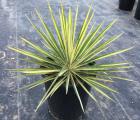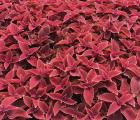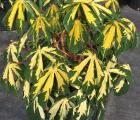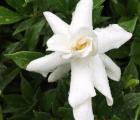Color Guard Yucca
The green and yellow foliage of Color Guard Yucca is stiff and produces snowy white flowers on a tall spike in late spring to early summer that are attractive to butterflies and hummingbirds. It is also covered in hundreds of curly white filamentous ‘hairs'. Sold here at Creekside Nursery in a 5 gallon size, it is ideal as an accent or container specimen, or planted in mass. It is tolerant of wind, heat, humidity, and drought and is considered as deer and rabbit resistant. As long as it is well-draining, Yucca does not care what type of soil you plant it in, and while they do prefer full sun, they can be tolerant of some light shade. Sharp-tipped leaves mean you should consider planting yuccas away from sidewalks, paths, mailboxes and driveways. Plants can quickly reach 3 to 4 ft. tall and 4 ft. wide, so plan to give yourself plenty of space to move around your Yuccas.





